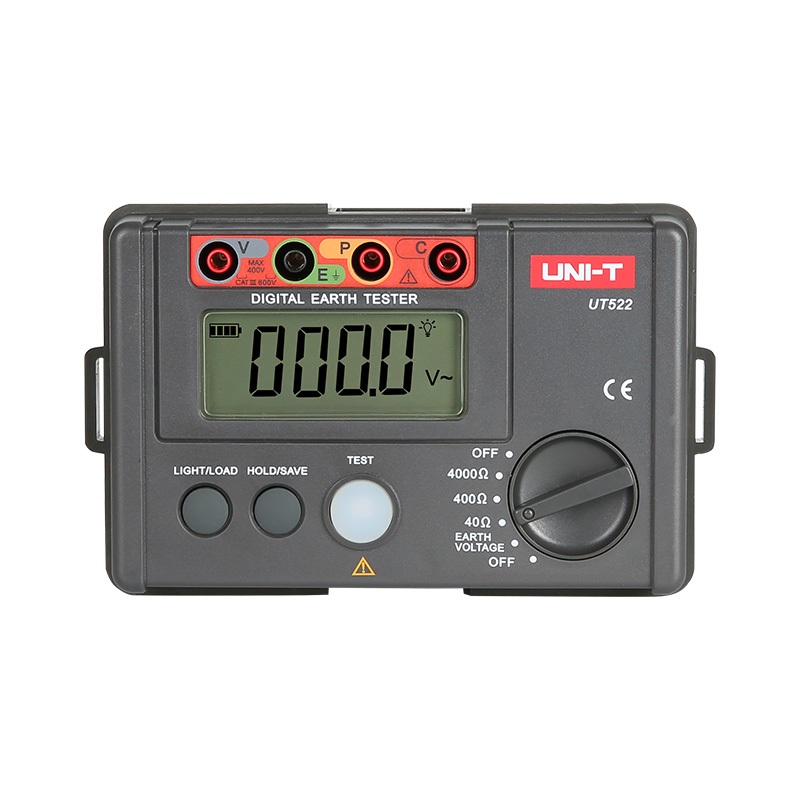Earth Resistance Meters
Earth resistance meters
Introduction to earth resistance meters
Earth resistance meters are essential instruments in electrical engineering. They are used to measure the resistance of earthing systems, which ensure that electrical currents are safely discharged to earth. These measurements are essential for the safety and reliability of electrical installations and systems.
Precise measurement of earthing resistance can minimize potential hazards such as electric shocks, protective system failures and fire risks. In many industries and applications, regular testing of the earthing resistance is therefore mandatory and indispensable.
Types of earth resistance meters
There are different types of earth resistance meters, which vary depending on the area of application and measurement method. The most common types are simple resistance meters, clamp meters and modern digital earth testers
Simpler measuring devices work on the principle of the test current method, in which a direct current is passed through the earth and the resulting voltage drop is measured. Clamp testers use induction methods without interrupting the earthing system, which makes them particularly suitable for temporary measurements in existing systems. Digital earth testers usually offer higher accuracy and additional functions such as data storage and analysis.
Use and calibration
The correct use of earth resistance meters is crucial for the accuracy of the results. Users should always follow the manufacturer's instructions and ensure that all connections are made correctly. Attention should also be paid to the environment in which the measurements are taken, as external factors such as humidity and temperature can influence the results.
Regular calibration of the measuring devices is also essential. This is the only way to ensure that the values displayed are correct. Many manufacturers offer corresponding calibration services or supply calibration certificates with the devices. In industries with high safety requirements, regular calibration is often even required by law.
Essential functions of modern earth resistance meters
Modern earth resistance meters are equipped with a variety of functions that both facilitate operation and increase the accuracy of the measurements. These include multifunctional displays that can show other important parameters in addition to the earthing resistance.
Additional features such as automatic fault detection, Bluetooth or WLAN connectivity for data transfer and integrated memory functions for documenting measurements are particularly useful for professional users. Many devices also have user-friendly interfaces and intuitive operating menus, which simplifies handling.
Application areas
Earth resistance meters are used in many different areas. In industry, for example, they are used to check machines and systems to ensure that they are properly earthed. They also play an important role in the construction industry, for example when checking lightning protection systems.
In the energy supply sector, they are essential for testing and maintaining transmission and distribution networks, particularly when installing transformers and substations. Measuring the earthing resistance can also be of great importance in the private sector, for example when installing solar systems.
Safety aspects
Safety plays a central role when using earth resistance meters. It is important that the devices are regularly maintained and checked to ensure their functionality and accuracy. Users should always adhere to safety regulations and wear suitable protective clothing.
In addition, it is advisable to familiarize yourself with the specific sources of danger before use and to follow appropriate procedures in emergencies. By observing the safety precautions, accidents can be avoided and safe operation guaranteed.
Purchase criteria
There are several important criteria to consider when buying an earth resistance meter. In addition to the accuracy and reliability of the devices, attention should also be paid to user-friendliness. Simple operation and easy-to-understand instructions can make measurements much easier.
Other important factors are the availability of accessories and support from the manufacturer, particularly with regard to calibration and maintenance. Price also plays a role, with more expensive devices usually offering additional functions and greater accuracy.
Conclusion
Earth resistance meters are indispensable tools in many technical and industrial areas. By reliably measuring the earthing resistance, they make a significant contribution to the safety and reliability of electrical systems. When selecting and using these devices, you should always pay attention to quality, calibration and user-friendliness.
Investing in high-quality measuring devices pays off in the long term and contributes to the safety of people and systems. It is therefore important to obtain comprehensive information and select the right devices for your specific requirements.

